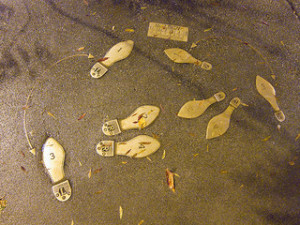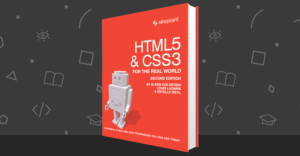
A couple of months ago I watched the movies ‘Her‘ and ‘Computer Chess‘.
In essence, they were two ends of the same spectrum, demonstrating how computers interact with us instead of us interacting with them, with computers being the active initiator, instead of the passive responder to our instructions.
The world in ‘Her’ is not far removed from the present — where people seem comfortable with computers and devices prompting interactions with them on an almost constant basis.
In ‘Computer Chess’ (set in the 1980s), we are back in a world back where the mere thought of a computer initiating an action with us is so freakish, that even the humans acting out the instructions of the computers are seen as bizarre.
When one computer begins to learn and become more human-like, it is treated as an anomaly, not an advancement.
As we are now firmly moving in the direction of a ‘Her’ type world with ‘Always on’ devices and services increasingly prevalent, perhaps its time we started re-thinking our UX guidelines.
Let’s coin a new buzzword, for convenience at least, how about ‘ALUX’ (ALways on User Experience)?
ALUX covers a wide gamut of services and tools from calendars and to-do lists to recommendation engines and quantitative self trackers to fully fledged personal assistants, led by Siri, Google Now, XBox, and perhaps, Microsoft Cortana.
Many of my ALUX recommendations fall into a handful of broad and related camps. There may be a little repetition, but I’ve decided to break them into their respective topics.
How to present information

The ALUX will be presented in a myriad of different ways and across many varied devices.
How do we create a consistent representation of information that is understandable on a variety of devices and interfaces?
Keep the information and it’s presentation simple, adding more relevant and appropriate pieces of information and functionality to suit the context, device interface and method(s) of interaction.
Always include an opt-out
There are many of us who love the new wave of always listening services that are constantly notifying and recommending things to us. I’m more than happy to have ads and recommendations tailored to me, if it means I don’t have to watch another car ad (as a non-driver).
For a variety of reasons — privacy chief amongst them — many of us are not comfortable with this situation.
And that’s fine. Thinking for yourself and allowing for some serendipity is no bad trait.
So, if you’re contemplating adding active services into your products, try to ensure they can still work without them by offering a passive method to interact as well. For example, maybe a “things you missed” summary, presented to users when they are ready to check in again.
Don’t freak people out
Even without entering the uncanny valley, a system that prompts interactions with humans will intimidate many, especially when it starts to feel like it knows far too much about you.
This can lead to users being far more disturbed by wondering what is happening with all this information than by the ‘attitude’ and voice of the system.
Ease users in
‘Traditional’ interface design has begun to move away from skeuomorphism as a method to make users more comfortable with ‘real world’ comparisons. Many users now have grown up with digital devices and the paradigms used in older interfaces now cause more confusion than assist.
The same applies (or will apply) with ALUX and devices with non-physical input, there will be a period of time where using familiar real world comparisons will be necessary to make users understand how to achieve their aims, but over time more ‘out of the box’ thinking can happen.
Don’t be antisocial

One of the most striking aspects in ‘Her’ is how everyone wanders around absorbed in their own devices and worlds. Scarily, we all know this isn’t too far from present reality.
The downward stare at a glowing screen has become a part of our daily lives. Many are not looking where they are walking and other may be staring at mobile devices during social events.
Who among us can say they haven’t at some time been more engrossed in the communities found at the end of a screen than those around us?
Whether this is or isn’t a problem is yet to be decided and devices like Google Glass have helped bring up the discussion of what is currently acceptable to society.
It is likely that much of what is discussed here will be interacted with through wearables and highly likely on mobile devices. How do you create active, assistive, helpful services that aren’t perceived as antisocial to society around us?
Or will society’s opinion catch up with technology eventually and we should just push ahead with our ideas?
Not everything is important

I love Google Now and find many of its card prompts useful, but one of its criticisms is its propensity to react to almost everything you do. I look something up on Google search and minutes later Google Now is telling me how to get there or showing me related news.
Technically this is amazing, but also annoying, cluttering cards with unimportant information. There are several solutions to this, one is to ensure that your services learn over time. Offer to mark things as important or not and ensure your algorithms learn from these choices.
Also offer a method for users to find out why something was deemed important, training the user as much as the system.
Context
With the current and future wave of devices and software there is great potential to have an incredibly accurate picture of users behaviours and demographics, spatially and over time. Bearing in mind some of the other issues discussed in this post make the most of this potential and delight your users.
If you can provide context aware content or services then do so.
Think outside of the box with these contexts, location is an obvious one, but what about providing different content based on time of day, or network connected to?
With wearables there will also be the potential for providing content based upon a completely new range of statistics such as body temperature, heart rate, tiredness and much more.
Connectivity with other services
A frustration with the current ALUX such as Siri or Google Now is that they exist too much in their own isolated ecosystems and many users don’t hold all their information in one ecosystem.
Google Now and Siri are rumoured to be opening up their APIs to third parties (Cortana has no details yet) so options may be expanding for getting your content into the big three.
There are alternatives to the above, but to make them work effectively it’s all about gathering enough accurate data, and smaller alternatives will find this hard unless they offer a spectacularly amazing user experience or are open to making it extremely easy to connect other services and sources of data.
Training

Creating an effective ALUX will require a short period of adjustment for many users as there is a different UX and interaction process from what many are used to, with new paradigms and methods of interaction.
The ALUX itself often requires a period of time to learn about its user. This process in itself is something that the user needs to be trained in, guide them through what is happening and explain that results may not be accurate and useful yet.
Conclusion
Some of the technologies and techniques behind the ALUX are not new, but the affordable processing power and data plans to enable the combining of them into usable active devices are.
These are new worlds of interface design, with new paradigms and new ideas, I make no pretence that my ideas are the final word, if you have any ideas, comments or things to add, please do so in the comments below.
 Chris Ward
Chris WardDeveloper Relations, Technical Writing and Editing, (Board) Game Design, Education, Explanation and always more to come. English/Australian living in Berlin, Herzlich Willkommen!





